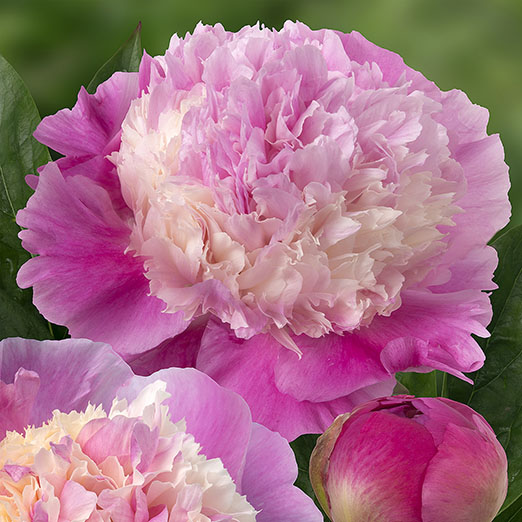How to grow Erodium
A relative of geranium, erodium is a genus of around 60 species of pretty, low growing flowering perennials. It is cultivated for its attractive foliage and long flowering period.
Erodium tends to occur naturally in rocky, often chalky habitats, in the mountains of Europe and Central Asia. It will therefore thrive in a sunny, well-draining spot.

Key Information
Position
Soil Conditions
Hardiness


Where & when to plant Erodium
Position- Full sun
Soil- Humus rich, sharply drained, neutral to alkaline
Flowering Period- Late spring to late summer
Hardiness- Hardy
For best results, plant in autumn or spring. An autumn planting is suitable for those gardening in mild conditions (broadly speaking, the southern half of the UK). For those liable to very cold winters it is best to wait until spring (generally the northern half of the UK). Planting can be carried out during summer, though a watchful approach to watering is required.
Smaller erodium varieties are ideal for planting in rock gardens, troughs, and containers. Taller, more robust types can be used to edge a herbaceous border. Always ensure erodium has a sunny, well-draining spot.
How to plant Erodium
In the ground
- Clear the chosen area of weeds.
- Dig a planting hole several times larger than the root ball. If your soil is at all moist, add plenty of sand or horticultural grit to the planting hole and mix thoroughly. Avoid heavy, clay soil.
- Place the plant in the hole, ensuring the top of the root ball sits level with the surface of the soil. Too low and the plant may rot, too high and the roots can dry out.
- Backfill with soil and firm in gently.
- Soak well with water.
- Mulch around the base with horticultural grit or gravel.
In a container
- Choose an appropriate container. Ensure there are plenty of drainage holes in the bottom.
- Use a good quality potting compost with plenty of horticultural grit mixed in (aiming for at least 30% grit), and, if not already present in the compost (check the description on the bag) some slow-release fertiliser granules.
- Start by partially filling the pot with compost; enough so that when placed on it the upper surface of the root ball is about 3cm lower than the top of the pot.
- Infill all the space surrounding the root ball with compost, firming down with your fingers then adding a little more so the plant is held tight.
- Pick up the pot (if you can!) and lightly tap on the potting bench or ground a few times to help further settle the compost around the plant.
- Soak well with water.
- A mulch with horticultural grit will look attractive and help to prevent a ‘cap’ or crust forming on the top of the compost (something container plants can suffer due to the artificial nature of their watering).

What to plant with Erodium
In rock gardens and troughs, erodium makes a natural companion for other low-growing sunny stone dwellers such as thyme, sedum, armeria, creeping phlox, and helianthemum.
In a border, combine it with other soft, pale pinks and purples, such as allium, nemesia, nepeta, and geranium.



How to care for Erodium
Pruning and Deadheading
No pruning is required, though erodium will benefit from regular deadheading.
Watering
In the ground, water erodium regularly until established, and in very dry spells thereafter.
Water container-grown erodium regularly in the growing season (allowing the top few centimetres of compost to dry out between soakings), and sparingly during winter.
Avoid exposing erodium to excessive winter wet, which may mean moving containers into the rain shadow of a wall, an unheated greenhouse, conservatory, or cold frame, or mulching those in the ground with a dry mulch such as straw.
Cold Protection
While the hardiness of erodium can vary, all the varieties currently stocked by Hayloft are hardy to between -10°C and -15°C. This means that provided they are given adequate drainage they will overwinter easily in most of the UK with no need for additional protection.
Pests and Diseases
Erodium tends to be trouble-free.
How to propagate Erodium
Erodium can be propagated by basal stem cuttings in late spring to early summer.
- Find several strong, basal shoots (originating from the crown) around 10-12cm long.
- With sharp secateurs or a knife, sever cleanly from as close to the base as possible.
- Put them in a plastic bag straight away to prevent drying out.
- Fill a container with a compost mix which is at least 50% perlite (or if you prefer, as we do, 100% perlite).
- Remove leaves from the lowest third.
- If the remaining leaves are large, cut them in half with a sharp knife (to reduce water lost through transpiration).
- Insert the cuttings into the compost and water lightly. Several cuttings can be put in the same container if there is enough space to do this without them touching.
- Place in a greenhouse or propagating unit if you have one or covered with a plastic bag on a windowsill if not (out of direct sunlight).
- Keep the cuttings misted and occasionally watered until they root. You will know this has happened when roots emerge out of the bottom of the container.
- Gently remove rooted cuttings and pot them into individual pots. Grow on in a frost-free environment such a conservatory, greenhouse, or windowsill, until they are large enough to plant out.
Common Erodium questions
- Is erodium a geranium?
While belonging to the same family as geranium and having similar-looking flowers, erodium is its own separate genus. - Is erodium hardy?
The hardiness of erodium can vary, however Hayloft currently only stock those which are hardy to between -10°C and -15°C. - How fast does erodium grow?
Erodium can take between two and five years to reach its eventual size.




